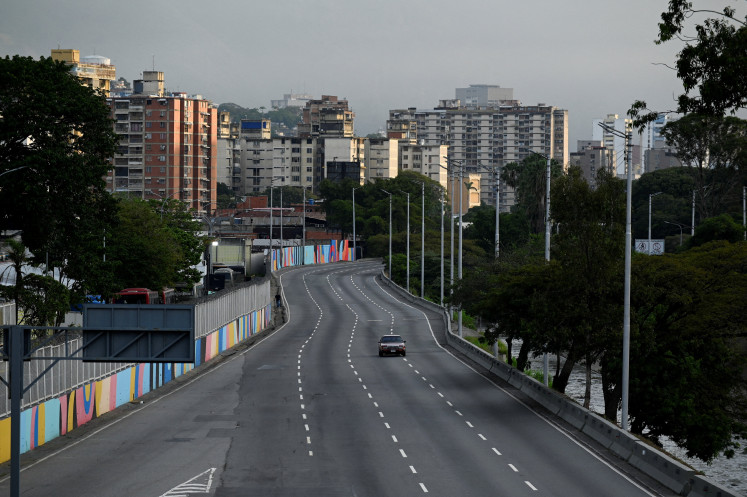Popular Reads
Top Results
Can't find what you're looking for?
View all search resultsPopular Reads
Top Results
Can't find what you're looking for?
View all search resultsManta ray trade puts protected animal at risk
The manta ray is continuously being slaughtered on a number of islands in the Sawu Sea, East Nusa Tenggara (NTT) as fishermen ' unaware they are a protected and an engendered species ' catch them and sell them in a number of regions and markets located on Flores Island
Change text size
Gift Premium Articles
to Anyone
T
he manta ray is continuously being slaughtered on a number of islands in the Sawu Sea, East Nusa Tenggara (NTT) as fishermen ' unaware they are a protected and an engendered species ' catch them and sell them in a number of regions and markets located on Flores Island. The manta ray is on the verge of extinction and can be sold for
Rp 500,000 (US$52) each.
The matter was disclosed by Flores Culture and Environmental Democracy Forum head Rofino Kant to The Jakarta Post in Borong recently.
Rofino said he had actually watched fishermen at the Borong beach cut the manta rays into pieces and sold them at the fish market in Borong.
'The fishermen claimed that they were unaware that manta rays are protected. Generally, the manta rays are caught by fishermen as they catch fish in the Sawu Sea,' said Rofino.
He expressed hope that the government, environmental groups and manta ray lovers would provide counseling to the local community living around the Sawu Sea, especially fishermen, on the importance of protecting sea species, including sharks, whales and other protected species.
Rofino said divers from across the world who visit the Sawu Sea would cry if they knew and saw the manta rays being butchered.
Manta rays are a prime attraction for divers, especially ahead of the peak event of Sail Komodo in September when many foreign visitors and participants will take part in diving activities in the Sawu Seas.
Rofino said based on the International Union for the Conservation of Nature and Natural Resources (IUCN), manta rays are on brink of extinction and have been classified under Appendix II of the Convention on International Trade in Endangered Species (CITES) since March this year.
In the Convention on Migratory Species of Wild Animals, it has also been stated as protected since 2011.
According to Rofino, manta rays have yet to be protected by law in Indonesia, while the Raja Ampat regency administration in West Papua has issued a local bylaw to protect manta rays.
He said that a manta ray reaches an adult age between 8 and 10 years and also could live up to 50 years. Its gestation period is between 12 and 13 months. A female manta ray is able to give birth to only up to two offspring.
A local fisherman, who requested anonymity, said fishermen do not intentionally catch manta rays but they were accidentally caught in their nets while they fished in the Sawu Sea.
'We are even not aware that the manta rays are protected and always sought after by visitors, or underwater lovers, to watch them. We only know about stingrays, but we did not know that the stingray actually turns out to be the protected manta ray,' he said.










